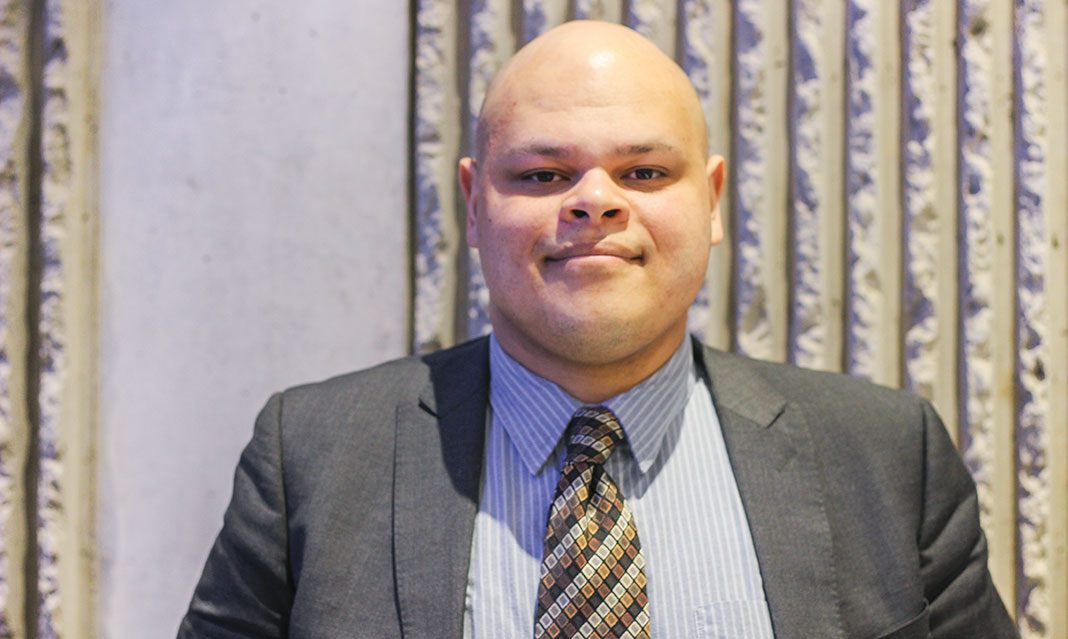Last Tuesday, the political science department at UTM in collaboration with the Office of the Dean presented their Annual Public Affairs Lecture hosted by Jamil Jivani, author of Why Young Men, which was released last year. In the book, Jivani outlines some of the main reasons why young men in particular are driven to engage in violent crime. His lecture at UTM, titled “Roots of Radicalization,” built upon this topic, extending it to elucidate the similarities between demographics prone to acts of violence that have been brought to attention recently.
Jivani travelled to Brussels and Paris after the terror attacks that occurred in the cities, seeking to uncover the reasons why young people are prone to radicalization: a buzz-word that entails the process by which people gradually adopt extremist ideals that clash against the ideals of nations. Although radicalization can be non-violent in nature, Jivani focused on the violent tendencies that are exhibited as a direct product of radicalization. He made his way to Egypt and Kenya afterwards to learn more about the communities that fight against radical ideologies.
Jivani sought to make clear the overall direction of his presentation: a talk that encourages a solutions-based approach, separate from ideological boundaries. To expand on this, he broadly generalizes different ideologies that are commonly referenced in the political scene, known to many as left-right political spectrum. While the right-wing embodies personal responsibility and matters of culture, family, and faith, according to Jivani, the left-wing tends to believe in the existence of systemic barriers and advocates for equality, equity, and inclusion. He mentions these ideologies to make a point about the desire for solutions—often these ideologies cloud discussion and, in the event that they contrast, make solutions quite difficult to achieve.
Jivani’s first look into radicalization begins with gangs—a topic that phases in and out of attention. There were about 51 lives lost to gang activity in 2018 in Toronto, but despite this seemingly high number, there was scarce media coverage, and no alarming public outrage. This could be compared to, as a recent example, the assault in New Zealand—which resulted in a similar number of casualties—received international attention. Jivani chalks this down to how the perpetrators in both cases are understood and perceived.
One specific example he discusses at length is how violent crime was handled in Chicago where over 3000 people were shot in 2018. To remedy this issue, a program was rolled out over the course of several months that sought to put people to work, and the result was a 43 per cent drop in violent crime, according to a study conducted in 2014. Jivani notes that on the surface, this approach embodies left-wing ideologies, which attempt to reduce poverty in society in order to reduce crime rate.
However, upon further inspection, a few interesting points came from the Chicago program. At the end of the day, those involved in the program made little profit from their work in the program as their jobs were typically part-time and offered only minimum wage. Additionally, although there was a significant reduction in violent crime, other types of crime retained the same frequency. The theory behind the program’s success then, most likely, lies in the positive impact it has on self-control, decision-making, and overall discipline, as well as giving those who may have once had nothing to lose a greater purpose in life. The program as a whole ends up being a mix of political ideologies, solidifying Jivani’s point that solutions to problems of violence must be considered separate from viewpoints.
As Jivani moves on to discuss Jihadism, he first mentions an organization that trains young citizens for the work force, similarly to the program in Chicago. Education for Employment (EFE) has landed many previously unemployed youth jobs across the Middle East and North Africa. Jivani reached out to the EFE to ask alumni of the organization whether they believed that the program helped to reduce terror attacks at all. One respondent wondered whether there was an underlying assumption that if he was not subject to the EFE, he would have surely instead become a terrorist. Jivani thought upon this and realized this to be the prevailing assumption of himself, and perhaps North America and Europe as a whole. As religious tribalism becomes more politicized, Jivani stresses the need to humanize Jihadist belief systems in order to see how youth may be driven to participate in acts of terror.
To touch briefly on white supremacy, Jivani points out the severe lack of attention that white supremacy has received in comparison to other groups that involve themselves in violence. There exists some hypocrisy in the media regarding this, as Jivani points out the tendency of media outlets to blame entire populations for Jihadist acts of terror, while simultaneously treating white supremacists case by case, individually.
Across all these violent movements, there are similarities that Jivani makes clear, in his presentation: moral relativism, toxic masculinity, and the glorification of violence. Topics that can be discussed at length by their own merit, Jivani touches on their relevance briefly before ending with a final reminder to set ideologies aside when discussing solutions to violent crime.



